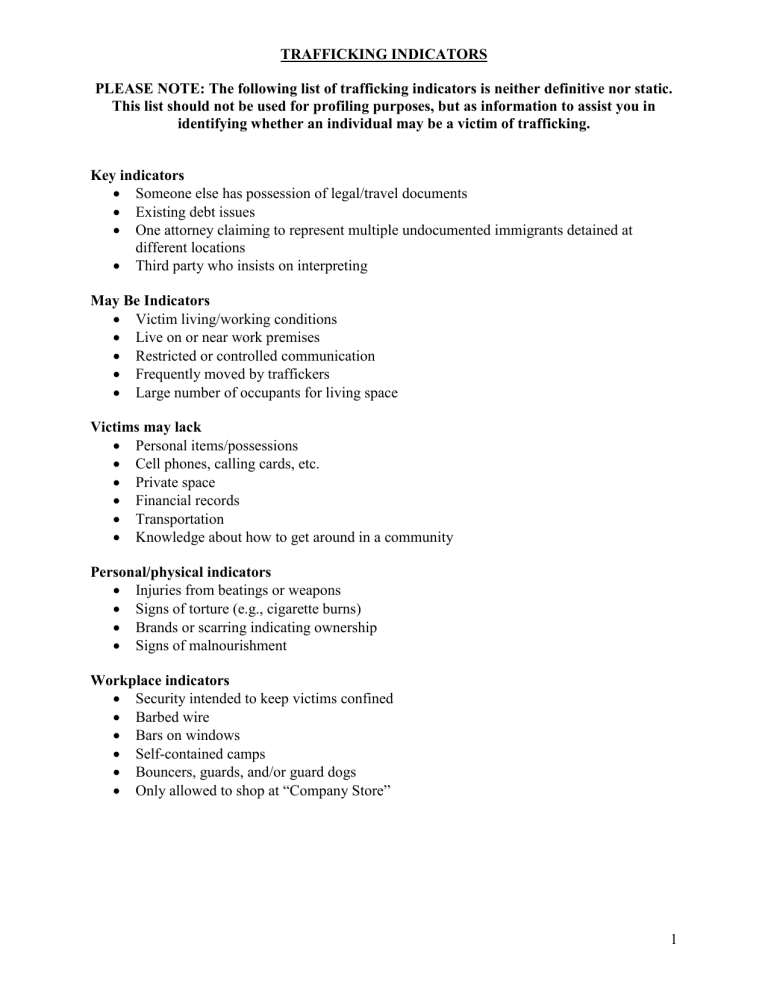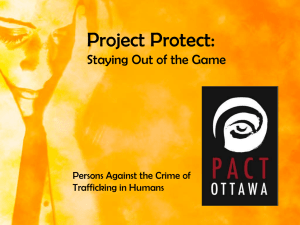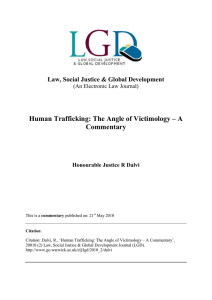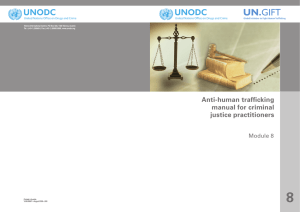TRAFFICKING INDICATORS

TRAFFICKING INDICATORS
PLEASE NOTE: The following list of trafficking indicators is neither definitive nor static.
This list should not be used for profiling purposes, but as information to assist you in identifying whether an individual may be a victim of trafficking.
Key indicators
Someone else has possession of legal/travel documents
Existing debt issues
One attorney claiming to represent multiple undocumented immigrants detained at different locations
Third party who insists on interpreting
May Be Indicators
Victim living/working conditions
Live on or near work premises
Restricted or controlled communication
Frequently moved by traffickers
Large number of occupants for living space
Victims may lack
Personal items/possessions
Cell phones, calling cards, etc.
Private space
Financial records
Transportation
Knowledge about how to get around in a community
Personal/physical indicators
Injuries from beatings or weapons
Signs of torture (e.g., cigarette burns)
Brands or scarring indicating ownership
Signs of malnourishment
Workplace indicators
Security intended to keep victims confined
Barbed wire
Bars on windows
Self-contained camps
Bouncers, guards, and/or guard dogs
Only allowed to shop at “Company Store”
1
TRAFFICKING INDICATORS
PLEASE NOTE: The following list of trafficking indicators is neither definitive nor static.
This list should not be used for profiling purposes, but as information to assist you in identifying whether an individual may be a victim of trafficking.
Forced Prostitution
Large amounts of cash and condoms
Customer logbook or receipt book (a.k.a. “trick book”)
Sparse rooms
Men come and go frequently
PLUS other trafficking indicators
Identifying Offenders
Do they maintain employee records?
Do they file social security deductions?
Who does their payroll?
How are employees paid?
How do they determine employee wages?
Who is their accountant?
What are their hours of operation?
Do they have a written vacation policy?
Where do employees’ children go to school?
Victim Realities
May not identify themselves as victims
May not speak English
Likely to use rehearsed stories initially
May be behaviorally dependent on trafficker
Trauma, shame, lack of trust may deter victims from telling the full story
Victims may be reluctant to speak to someone wearing a gun, badge, or uniform
Victim may not want family to know of his/her circumstances
Victim may exhibit “Stockholm Syndrome” behavior
Empathy for traffickers
Concerned for safety of the victim’s family in the home country
Victim Interview Considerations
Victim should be given a choice of speaking with male or female
Use informal conversation
Allow victim to set length and pace
Watch for nonverbal cues
Do not make promises
Do not videotape or audiotape initial conversations
Victim services/nongovernmental organizations (NGOs) should be involved as soon as possible—even if only a slight indication of victimization
Don’t expect to get full story right away
Building Collaborative Responses to Trafficked Victims of Domestic Violence and Sexual Assault
Futures Without Violence, OVW Training 2013
2








